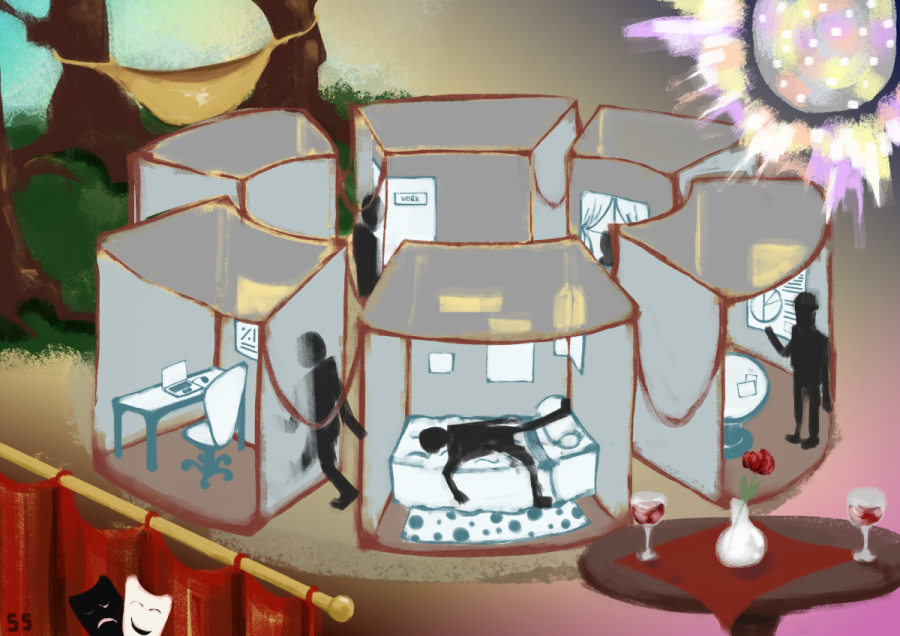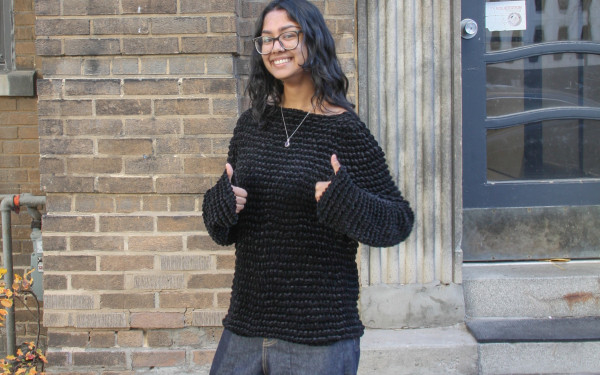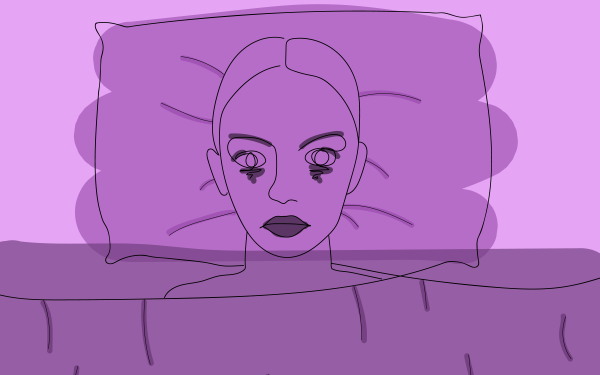Where can we go to talk?
Third spaces are the answer to social isolation and more sustainable living
I spent most of my undergraduate degree floating between libraries. When I was feeling chatty, I’d set up to work in the Geographic Information Center (GIC) at McGill, and when I needed somewhere quiet and warm, I’d sit in the chapel-adjacent Birks library.
This was the college life that I had envisioned for myself after spending my school years being restricted to studying in my bedroom or my friend’s room. With a coffee cup and baked zucchini bread from the basement café in hand, I’d walk in there almost every day of the week and see a utopian academic environment.
To my left, a couple of low armchairs I could sit and read in, and a help desk run by older students. To my right, rows of desks with available, fully equipped desktops for registered students next to wide windows overlooking the Mont Royal. As an easily accessible third space, those who knew about the GIC would frequent it almost daily.
“Third spaces” is a term coined by the sociologist Ray Oldenburg to recognize neutral social environments outside of home and work. This includes local cafés, parks and libraries since they offer the opportunity for community members to connect among one another without feeling pressured to socialize.
These spaces are vital for the health of any community, since they foster a feeling of safety and social unity.
Third spaces like libraries also create an environment that cultivates actual networking, instead of the phony, transactional social climbing and shoulder rubbing that is often associated with corporate events.
At the library center, I first learned about the uniqueness of ADHD symptoms in women from an acquaintance, who then explained to me the process of obtaining a diagnosis off-campus. Also at the center, I ran into someone-who-knows-someone-that-I-knew, who helped me move and tune my piano. And again, later that semester, someone offered to give me their extra ticket to a sold out university event.
Within those three walls and glass panel, anything was possible. Need a roommate? Someone in there is probably looking for one too. Need homework help? A student who previously took that course hangs out there. Heartbroken? Your new crush probably goes there too.
But as familiarity turned to monotony, I started to resent those libraries.
“See you at the library today?” became a question I would begrudgingly say yes to. The thirdness of those library spaces had started to dissipate as they merged back into the space of work. My attitude towards university got more serious, deadlines added up, and I was left spending my entire day on campus, then going straight home to sleep, cook, and prepare for classes the next day.
With the onset of the COVID-19 pandemic, the work-home separation then dissolved and the three spaces I was used to became one. The private home space absorbed the function of rest, socialization, work, exercise and leisure.
While having a single space for work and leisure was a welcome change initially, the limited availability of places to hang out in without the need to pay for a subscription, a drink, or an hourly rate once public indoor spaces were reopened slowly dawned on me.
For those of us working remotely, the absence of a third place can be quite difficult. As a recent graduate armed with an entry-level job and a non-valid student ID, I could no longer access student rates, including the reduced-fare OPUS, which meant that neighbourhood-centric activities were the more convenient option.
During the winter, this cuts the list of options down to just churches and other sacred spaces open to the public. In more pleasant weather, the local park shoulders the responsibility of an open and community-oriented third space, but the indoor options are still practically non-existent.
This means that there are no structures that support those unaffiliated with an institution or company with building a social life, which should be worrying to anyone who’s known unemployment, casual work, contractual work, remote work or even retirement.
Having a healthy and diverse network of people to engage with is not just important for making friends; a robust community can help its members grow, develop, transform and even start afresh.
While sketching at the park, I was lucky enough to share my drawing supplies with a six-year-old girl, whose parents then asked if I was available as a babysitter. This is, of course, extremely rare as most parents would be unlikely to feel comfortable with a 22-year-old stranger interacting with their kids.
The beauty of a third space is that it facilitates organic and healthy social connections without the need for excessive policing or surveillance, and it makes room for people from different ages and phases of life to interact in a way that doesn’t feel forced or transactional. Through situations like this, spaces like the library or park can foster children’s curiosity about the world around them and widen their perspective on those outside their immediate environments in a safe and sustainable way.
Due to the scarcity of such environments, I soon realized that being part of a community was something I had to seek, and so I did. I came across the Volunteer Bureau of Montreal , which unveiled a cohesive and dynamic social fabric built through individual volunteering opportunities.
While this didn’t necessarily constitute a third space in of itself, the different activities listed, like entertaining patients or the elderly, cooking or delivering meals, accompanying people with disabilities, and transporting necessary items were all parts of a third infrastructure that the city and people needed.
In the absence of communal living, these activities tend to fill in the socioeconomic gaps that the existing governmental services neglect, which benefits those accessing the services and those who voluntarily take part in implementing them. In both cases, these third ‘corridors’ remind us of a healthier and more cohesive way of living where community members can have their wants and needs met through each other.
However, the scarcity of accessible, inclusive third spaces remains a hole in our societal structure. The challenges posed by remote work, and economic barriers only underscore the urgency for creating more of these communal spaces.
They create a non-hierarchical environment for people to bond with each other outside of their social strata, no questions asked, free of charge.


_600_832_s.png)




_600_375_90_s_c1.jpg)